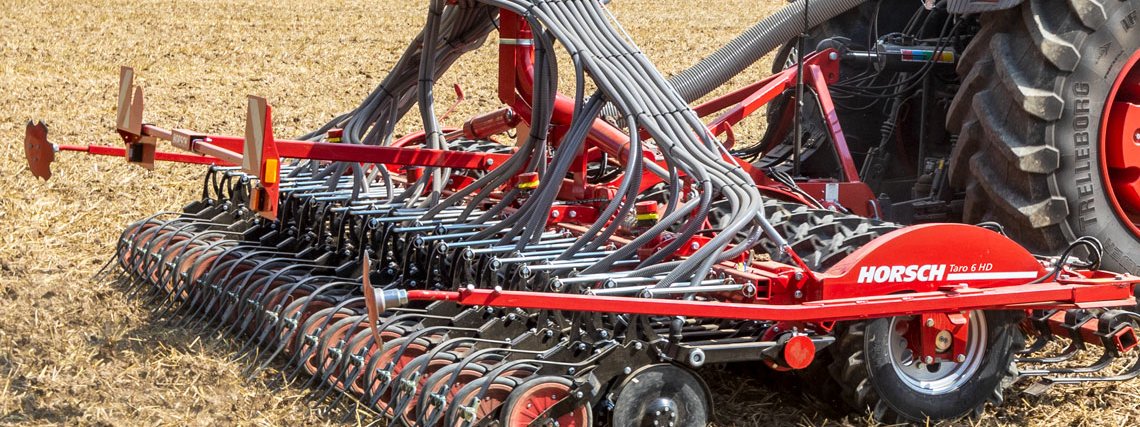Soil conservation vs. heavy machines (I)
Average reading time: 4 minutes
The danger of soil compaction caused by large, heavy and wide machines is nothing new. Because of their weight, the soil is compacted to such an extent that the pressure destroys its structure, and it can no longer fulfil its essential functions. Between the differently sized soil particles there are pores filled with air and water which provide the plant with the necessary nutrients. Heavy agricultural machines encourage an increase in soil compaction which in turn affects soil quality adversely.
For quite some time, manufacturers have been trying to develop solutions in accordance with soil conservation. The basic problem, first of all, is the cultivation window that becomes shorter and shorter. Among others, this is caused by the structural change which is additionally sped up by the growing shortage of staff. At the same time, weather extremes such as long-term dry periods and periods of heavy rainfall increase. Both results in a more and more significant growth of farm and machinery sizes. Efficiency and performance are the keywords.
A dilemma that finally confronts the farmer with several problems.
So the question is:
How can soil compaction be reduced?
The main objective of sustainable farming is to maintain an intact soil structure. After all, the farmer wants to cultivate the soil in a way that guarantees safe yields.
Costly approaches and other parameters
The high total weights of the machines are to be distributed in the field in the most soil-conserving way possible. Certain solutions like twin tyres or track drives are restricted by legal regulations on public roads or are unsuitable because of the high purchase and wear costs.
Possible parameters to reduce soil pressure:
- Adjusted air pressure
- Diameter and tyre cross-section
- Width of the tyres
- Offset driving
- Total weight of the machine
All of the above aspects influence the contact area and thus the contact area pressure on the soil and the subjacent layers.
In our blog series, we want to present and explain the correlation of these factors.
The power of air pressure
The tyre is the link between the machine and the soil with the air being the load-bearing element. Thus, you can say: the more air there is in the tyre, the more load it can carry.
Due to the compression of the air even tyres with a small volume but a high pressure, e.g. truck tyres, can carry a lot of load. However, this high pressure directly affects the contact area the vehicle stands on. On asphalt, a high contact area pressure is unproblematic and even desired – for the rolling resistance is lower and, thus, fuel consumption is, too.
Soil pressure on agriculturally used soils
As the shape of agriculturally used soils - whether grassland or arable land – changes easily and as there is the risk of creating tracks when driving in the field, the contact area pressure has to be kept as low as possible. This can for example be guaranteed by large tyres with low air pressure. By means of a tyre inflation system the required tyre pressure for road transport and field work can optimally be adapted to the conditions.
In addition, the internal pressure of the tyres should be set as low as possible depending on the load and the operational speed. But why? The soil pressure in the first 10 cm of the topsoil that has been driven over more or less corresponds to the internal pressure of the tyre. But it is precisely this layer that has to be able to provide optimum conditions for crop development. Modern radial tyres can even be driven with a pressure of just 0.6 bar. Thus, additional soil compaction can be avoided, and soil-conservation can be guaranteed while working.
Large diameter instead of wide tyres
But there are other parameters to distribute the high load on the soil structure. Axle loads of more than 10 t are quite common. But how do manufacturers make sure that these enormous forces are not transferred to deep soil layers?
Depending on the vehicle in question, either the height or the width of the installation space for the tyres can be utilised. A tyre with a large diameter and a high tyre cross-section is superior to a wider tyre in terms of load-bearing capacity and contact area.
But why is this the case?
We will explain this in the second part of our blog series about the topic "Working in a soil-conserving way".
